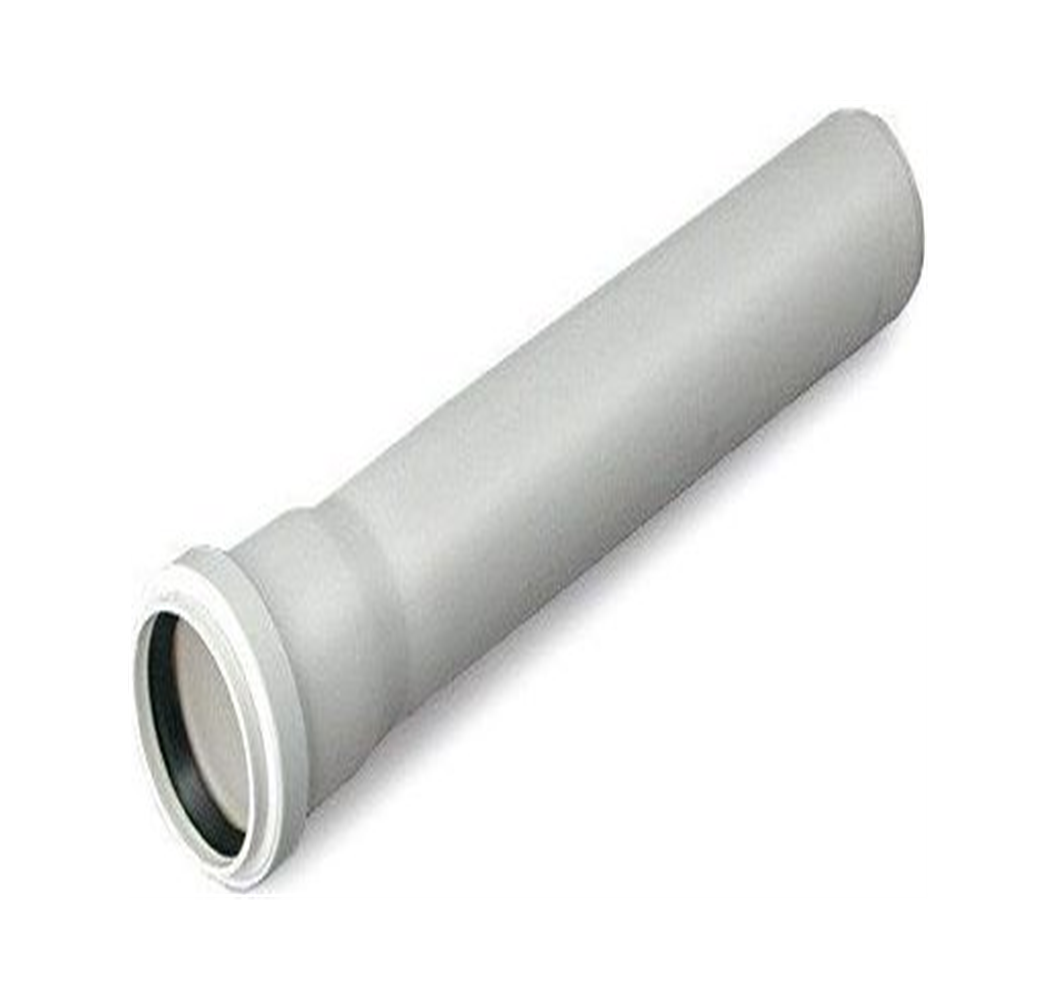


Self-flowing unpressurized internal sewerage piping consists of socket pipes and fittings, which according to standard EN 1451 must withstand an internal pressure of 0.5 bar (i.e. the pressure of a water column of about 5 meters). Pipes are either made of polyvinyl chloride (PVC) or polypropylene (PP).
The best-known and most used plastic is polyvinyl chloride (PVC), while polypropylene (PP) has only been known to the world for twenty years. Thanks to its good properties, PP has quickly become the predominant material for internal sewage pipes in the Nordic countries and also in Estonia. PP can be a homopolymer PP-h, i.e. pure polypropylene, or a copolymer PP-c containing 4-15% ethylene. The copolymer is elastic, hermetic, light and resistant to extreme temperatures, aggressive substances and other adverse conditions. These properties have contributed to the rapid spread and wide use of polypropylene in the construction of internal sewers.
PP pipes withstand temperature well (table 1).
Internal sewerage (also in households) must receive liquids with a high temperature (95–100 ºC). In such conditions, PVC pipes soften, lose their original shape, and socket connections begin to leak. Because the softening point of PP is 146 ºC, PP pipelines are preferred everywhere (e.g. in laundries, slaughterhouses, dairies) where water with a temperature close to boiling is constantly discharged into the sewer. PP pipes are also very frost-resistant and retain their elasticity at minus temperatures, which is why they can be installed very well even in winter. However, PVC becomes brittle at just a few degrees of cold and breaks easily when subjected to mechanical shocks. However, frozen PP material can be freely hit with a hammer - it will not break.
Compared to PVC, PP is more resistant to chemicals. The PP used in internal sewage is a copolymer that is exceptionally resistant to most alkaline and acidic solvents, therefore PP pipes are used, for example, in the chemical and pharmaceutical industries. Household chemicals are not dangerous for PP piping.
One reason why PP pipes have started to replace PVC pipes is that they are safer in a fire. Although PVC only burns in a flame, and when the flame goes out, the burning also stops, toxic chlorine is released from the burning PVC. According to several studies, the chlorine contained in PVC has been considered harmful to health even without the gas released during combustion. PP pipes ignite slowly, and their fire resistance can be increased by surrounding them with protective wool. When burning, they release much less toxic gases than other thermoplastics.
Polypropylene (PP) internal sewage pipelines are regulated by standard EN 1451. This standard divides the pipes into three classes according to the ring stiffness depending on the wall thickness (table 2):
S20 - only for indoor installation; must not be concreted under the floor or placed in the soil
S16 and S14 - for indoor installation; can be concreted under the floor and placed in the soil.
Standard number, stiffness class and wall thickness are marked on all pipes.
Thinner-walled S20 pipes are preferred in Central and Southern Europe, while in the Nordic countries only thicker-walled S16 and S14 class pipes are used. Using thin-walled pipes, which are 20% thinner and therefore cheaper, saves money, but the rigidity of the pipelines is two or more times lower. Pipes with thinner walls also dampen less sewage noise (this is quite important in internal sewage).